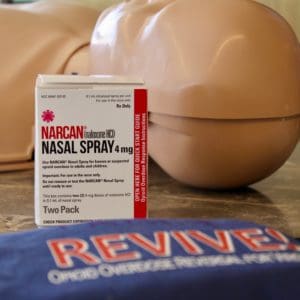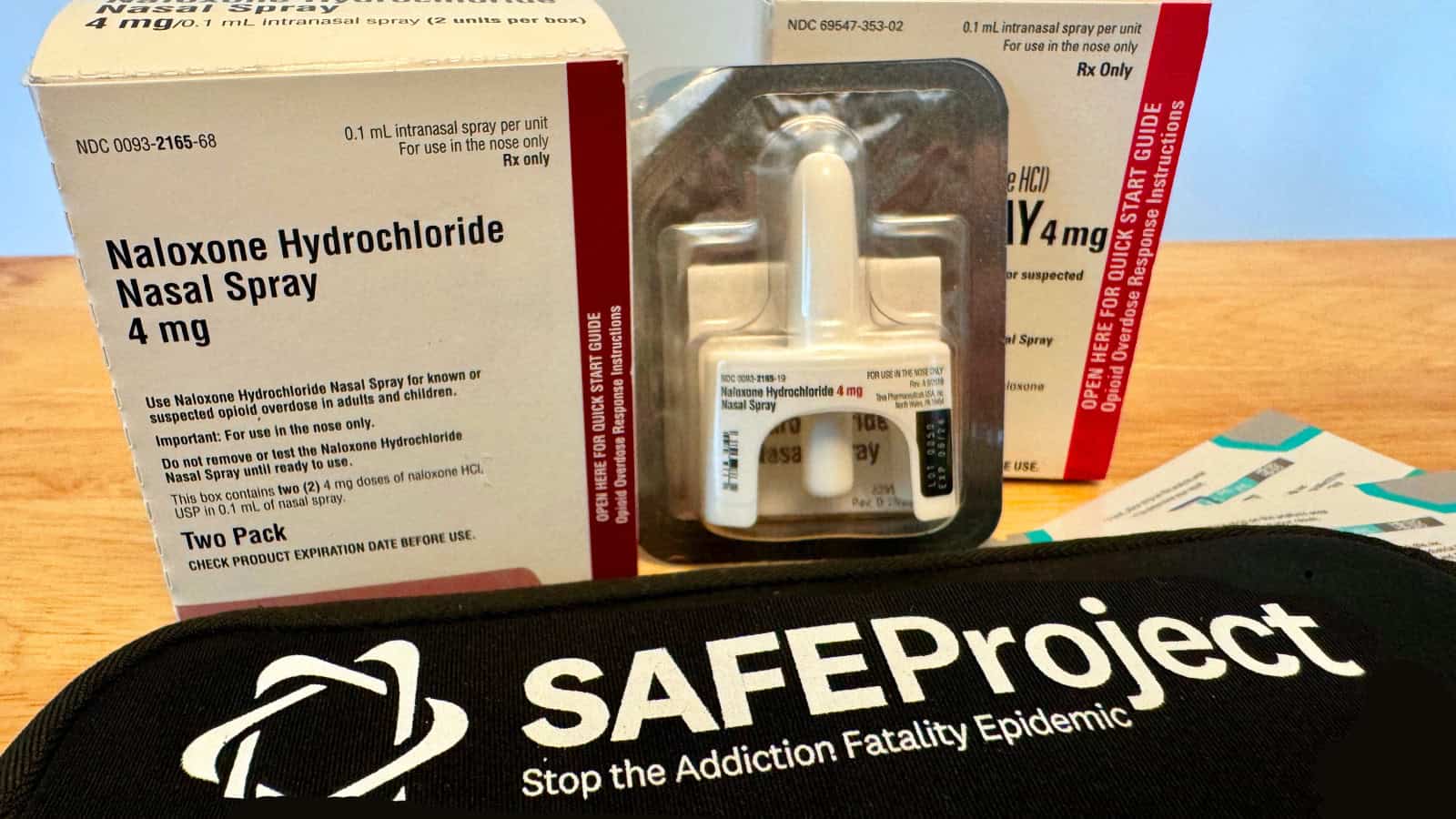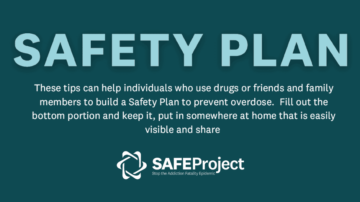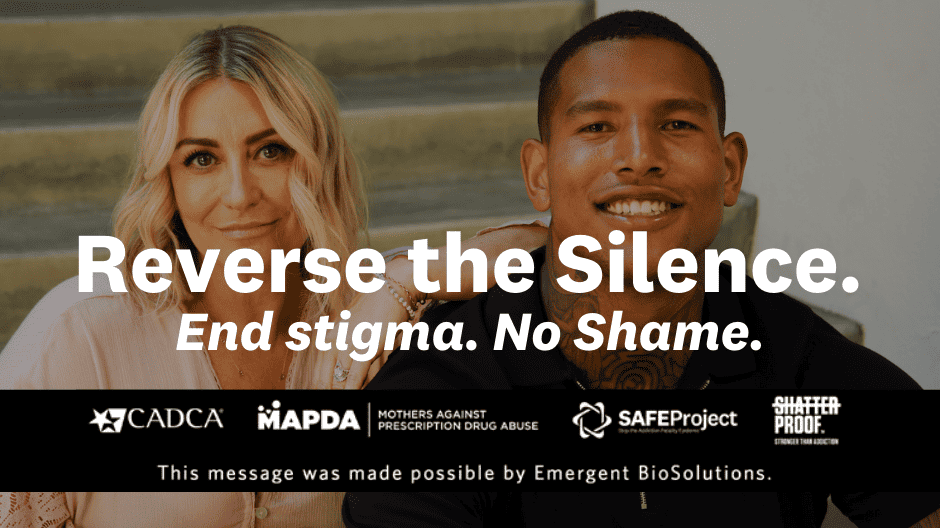Empower yourself to make a difference in the fight against opioid overdoses. Please share this video with friends, family, and anyone who should be informed about naloxone and overdose response.
To dive deeper into the topic, you are welcome to take our free comprehensive online training:
What is Naloxone?
Naloxone is a non-scheduled (non-addictive), prescription medication used in opioid overdoses to counteract life-threatening depression of the central nervous system and respiratory system, allowing an individual experiencing an overdose to breathe normally. Naloxone can be administered by non-medical personnel, which makes it ideal for individuals to treat overdose in people who have been prescribed opioid pain medication and in people who use heroin and other opioids. Naloxone only works if a person has opioids in their system and the medication has no effect if opioids are absent (National Harm Reduction Coalition). It may take multiple doses of naloxone to take effect. There is no harm in giving a person who is experiencing an overdose multiple doses of naloxone.
How Can I Get Naloxone?
- Pharmacy: Many pharmacies, both chain and independent, now offer naloxone without a prescription. In fact, NARCAN® (a brand name naloxone nasal spray) is now available over-the-counter! Knowing your state rules can also help you find it locally.
- Insurance: Naloxone is accessible to most insurance holders for a $0 copay. Contact your health insurance provider to find out your coverage and co-pay requirements.
- Naloxone by Mail: Explore options for finding naloxone in your own community prior to requesting through the mail with NEXT. NEXT is actively working to reserve their resources for those who truly have no other access points available to them.
- Public health departments: Check with your local public health department as they often distribute naloxone and may provide training on its administration.
- Community events: Keep an eye out for community events, workshops, or health fairs where naloxone may be available, and training on its use may be provided.
Local Harm Reduction Agencies are able to offer naloxone and training on how to respond to an opioid overdose, and may have other services that can be helpful for individuals who use drugs and their network. Check for resources in your state via NASEN.

Responding To An Overdose
An overdose happens when a toxic amount of a drug — or combination of drugs — overwhelms the body. Opioid overdoses happen when there are so many opioids or a combination of opioids and other drugs in the body that the individual is not responsive to stimulation and/or breathing is inadequate.
Signs of an opioid overdose may include: loss of consciousness; unresponsive to outside stimulus; awake but unable to talk; breathing is very slow and shallow, erratic, or has stopped; blue/purple or grayish skin; choking sounds, or a snore-like gurgling noise; vomiting; limp body; a face that is pale or clammy; and/or a pulse that is slow, erratic, or not there at all. In the event of an overdose, complete the following steps:
STEP 1: Stimulate them awake by yelling their name and administering a hard sternum rub to the chest plate.
STEP 2: If you have naloxone, use it. Administer one dose every two minutes.
- Injectable: Draw up the entire vial and inject it into the thigh muscle.
- Nasal: Stick the device all the way up one nostril and click the plunger, making sure the device is inserted fully (the medication will absorb through the sinuses).
STEP 3: Call 911; explain someone is not responsive and not breathing.
STEP 4: Provide rescue breathing. Get the person on their back, tip their head back to straighten the airway, pinch their nose, put your mouth over theirs and form a seal, one breath every five seconds.
STEP 5: When the person starts to breathe regularly on their own, roll them into a recovery position on their side.
STEP 6: Be gentle with them and yourself afterward!
SAFE Project provides further information on substances and how to respond to an overdoses. For additional questions on opioid overdose reversals, see the National Harm Reduction Coalition’s Overdose FAQs.

Tell us where you can find NARCAN® in your community on Social Media:
View this profile on Instagram
A Note About Xylazine
Xylazine is an alpha-2 adrenergic agonist that induces sedation and pain relief in animals such as horses. In the past several years, usage of xylazine by people has increased, contributing to rise of 0.36% of overdose deaths in 2015 to 6.7% in 2020.
When used by people, xylazine can lead to serious health issues, including respiratory depression, cardiovascular disturbances, gastrointestinal problems, and muscle tremors. The drug’s narrow therapeutic window increases the risk of overdose and toxicity, making it potentially life-threatening in excessive amounts. Xylazine can also cause severe skin wounds on the user, leading to additional health complications.
While naloxone can counteract the effects of opioids, it is ineffective against xylazine toxicity, as xylazine acts on different receptors in the central nervous system.
Learn More!
Help SAFE Project save lives.
Become a volunteer and join hundreds across the United States who are making long-lasting impact in our communities through public awareness and outreach efforts.




